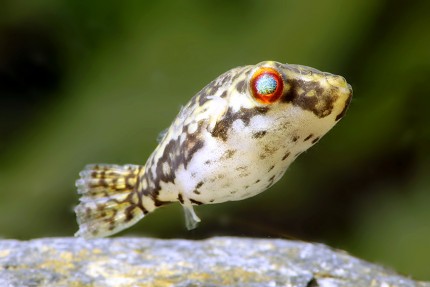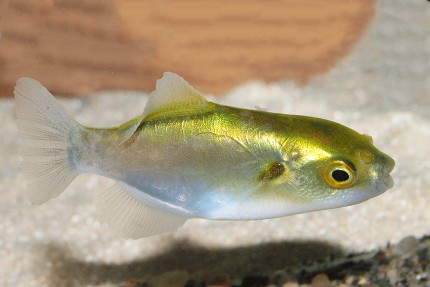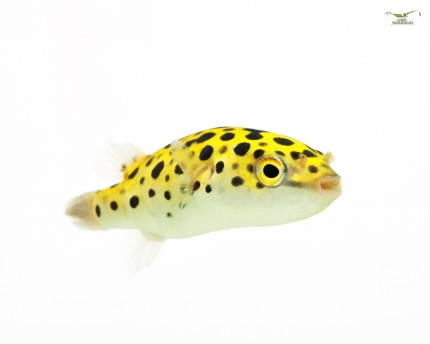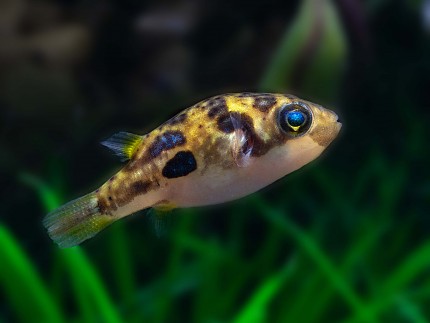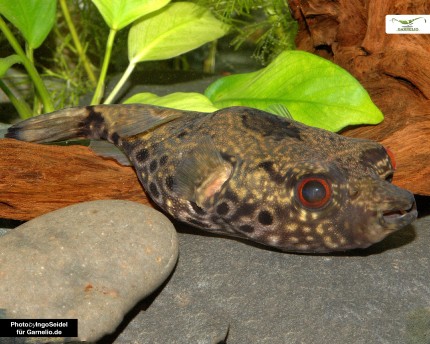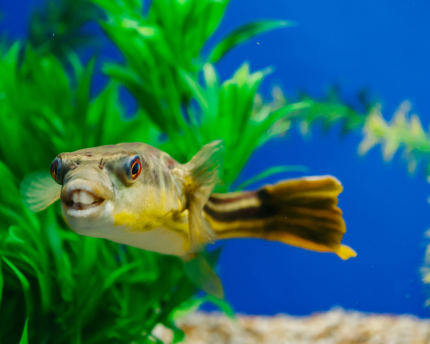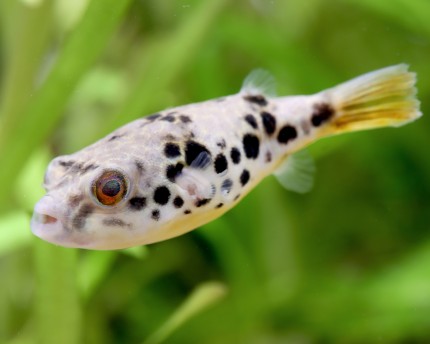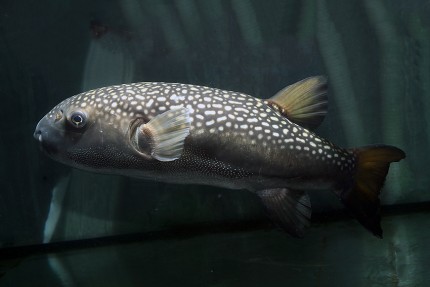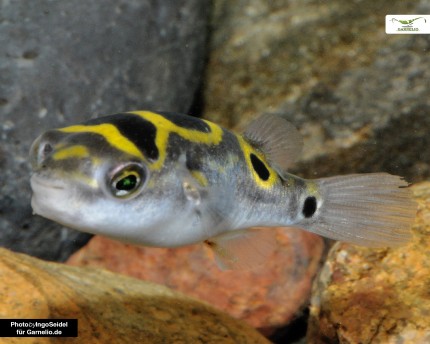Pufferfish in nature
Usually puffer fish live in brackish water areas or even in the sea, there are few species that also occur in freshwater. If you decide to keep a brackish water dweller in the aquarium, the ornamental fish will definitely need slightly salty water there as well. Some puffers, such as the Green P ufferfish, live in stony habitats with sandy bottoms in nature, while others, such as the Pea Pufferfish from India, come from almost stagnant, heavily weedy waters. These circumstances in the natural biotopes must of course also be taken into account in the aquarium!
Behavior of puffer fishes
Pufferfish have a very interesting and funny swimming style: Their pectoral fins flicker incessantly and propel the fish - the remaining fins only support and serve for steering. In case of danger, the species swallow water, which they squeeze into a sac-like expansion in the stomach - this way they can almost double their body size and scare off attackers. However, one should never provoke them to inflate, because the fish react in such a way only to enormous stress and feel anything but well. The ingested water is also difficult to get rid of again, and the puffer fish have to toil quite a bit to do so. So this should really be avoided! Basically, puffer fish are rather territorial and therefore need good hiding places.
Pufferfish in a brackish water aquarium
Candidates like the Green Pufferfish need an aquarium with water that is between freshwater and seawater in terms of salt content, i.e. brackish water. 4-8 g of salt per liter of aquarium water is already sufficient here. In nature they live in estuaries where river water mixes with seawater. These aquariums should have a water temperature appropriate to the ornamental fish's habitat and be well structured with stones so that the territorial animals can avoid each other. An aquarium size of 300 liters upwards is recommended for the Green Pufferfish. A sandy bottom accommodates the natural behavior of the aquarium fish. Planting in a brackish water aquarium is a little trickier because few aquarium plants are salt tolerant, however there are a few plants that will survive here at least for a while, such as moss balls or java fern.
Pufferfish in freshwater aquarium
Other species, on the other hand, come from freshwater biotopes and can therefore be kept in freshwater without any problems, of course. Among them, the large, bizarre-looking Palembang P ufferfish is well known, as is the fancy eyespot P ufferfish and the cute little Pea Pufferfish. These pufferfish need a plant-rich freshwater aquarium of appropriate size and soft to medium hard water. The tank should also be rich in hiding places. Nevertheless, with the larger, aggressive and territorial species single keeping is announced (at most a pair keeping is possible, but only in a sufficiently large, really well structured aquarium), only the Pea Puffers can also be kept in a group - if there is enough structure in the aquarium, so that they can avoid each other.
Breeding in the aquarium
Breeding pufferfish in the aquarium is possible, but difficult.
Pufferfish socialization
Pufferfish are aggressive and tend to nip other fish sensitively in the fins. What usually doesn't go well: just put a puffer fish in a community aquarium with a snail infestation and hope it cleans up among the snails, but leaves the rest of the stock alone. A species aquarium would always be a better choice for the puffers! Here they can then be fed well with the excess snails from the other aquariums. Shrimps and small crayfish are attacked and eaten, large crayfish or water crabs, on the other hand, injure the pufferfish for their part.
Feeding pufferfish
Pufferfish have a hard, constantly regrowing beak that they use to efficiently crack snails and crustaceans. If they are fed only soft food, the beak grows too long and the animals are then left to starve in agony. Live food in the form of snails is therefore basically an absolute must for puffer fish! Other live foods of suitable size and even fish fillets are also readily accepted by puffers, but snails should always make up a major part of their diet. In a pinch, you can resort to freeze-dried food snails, which you can buy from our online store. They are also well accepted.
Conclusion
Pufferfish with their special requirements are by no means an easy way out of a snail plague - the ornamental fish should definitely be kept species-appropriate. The funny, interesting animals simply do not deserve to be burned up as snail eaters! However, if you would like to get an interesting aquarium animal that shows its very own character and definitely interacts with its owner, you can consider whether a puffer fish would not be a good aquarium fish after all.

